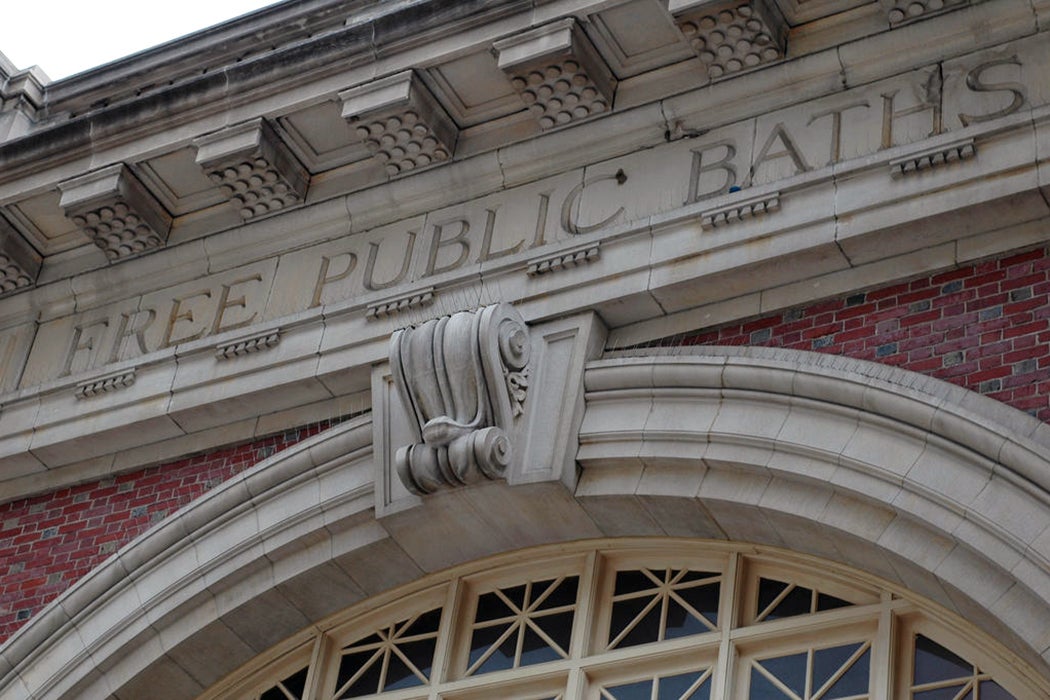With warm weather comes sweat, and with sweat comes…stink. That was a big problem in Progressive-Era New York, writes Andrea Renner—and sparked a long-forgotten trend of public bathhouses designed to cleanse the unwashed masses.
“In Gilded Age America, social classes were divided not only by wealth and culture, but also by smell,” writes Renner. It wasn’t just a matter of grueling physical labor or limited bathing facilities, she notes. Rather, the stinking poor uncovered upper-class anxieties about immigration, class, and cities.
Middle-class families had increasing access to bathtubs and water. Meanwhile, 97 percent of tenement dwellers did not. Communal sinks and plumbing problems made bathing a challenge. That was a problem not just for the working poor, but for the upper classes, who considered uncleanliness “a moral failure as well as a threat to public health.” Clean was good, dirty was bad—and bathing became a metaphor for Progressive-Era reform.
Enter the bathhouse. England and Germany were already home to public baths, and American reformers began a social experiment that riffed on the European concept. In 1891, New York opened the People’s Baths, where people bathed in “rain baths,” or early showers. In just a year, over 10,000 people bathed there.
In 1894, writes Renner, bathing became a campaign issue in New York, ushering in “a golden age of bathhouse construction.” Renner chronicles the building of 26 municipal and charity baths between 1901 and 1914—bathhouses that furthered the new art of indoor plumbing while providing efficient bathing opportunities to tenement dwellers on the Lower East Side. These structures were microcosms of Progressivism, shuffling bathers in and out using an organized process that turned the “filthy” poor into uplifted city residents.

The baths “provided little space for congregating and [prohibited long stays],” turning the relatively new concept of a leisurely, private bathing experience on its head. That decadent experience, it seems, was only for the rich. The poor, on the other hand, were handed a cake of soap and a towel and hustled into an institutional shower.
Nevertheless, writes Renner, the experience was a luxury for people who might never have bathed otherwise. Despite strict rules against socialization (possibly enacted to discourage homosexual activity), bathers paid off attendants to take longer-than-allowed showers and socialized freely inside.
Weekly Newsletter
Ironically, the baths that reformers so loved weren’t as beloved by New York’s poor—in part because they came from the demands of reformers and not the public. “Bath reformers of the 1890s had failed to understand that European bathhouses were popular in part because of their sociability,” writes Renner.
Eventually, the rise of plumbing did away with the public bathhouse altogether, although their successors—public pools—continue to play important roles in the city. The idea of a public bath is unfamiliar today, but at the time it represented an ambitious social experiment. Though they’ve been converted into rec centers, you can still spot a few of the iconic buildings in the city today—a reminder that even the way we bathe is laden with meaning.







